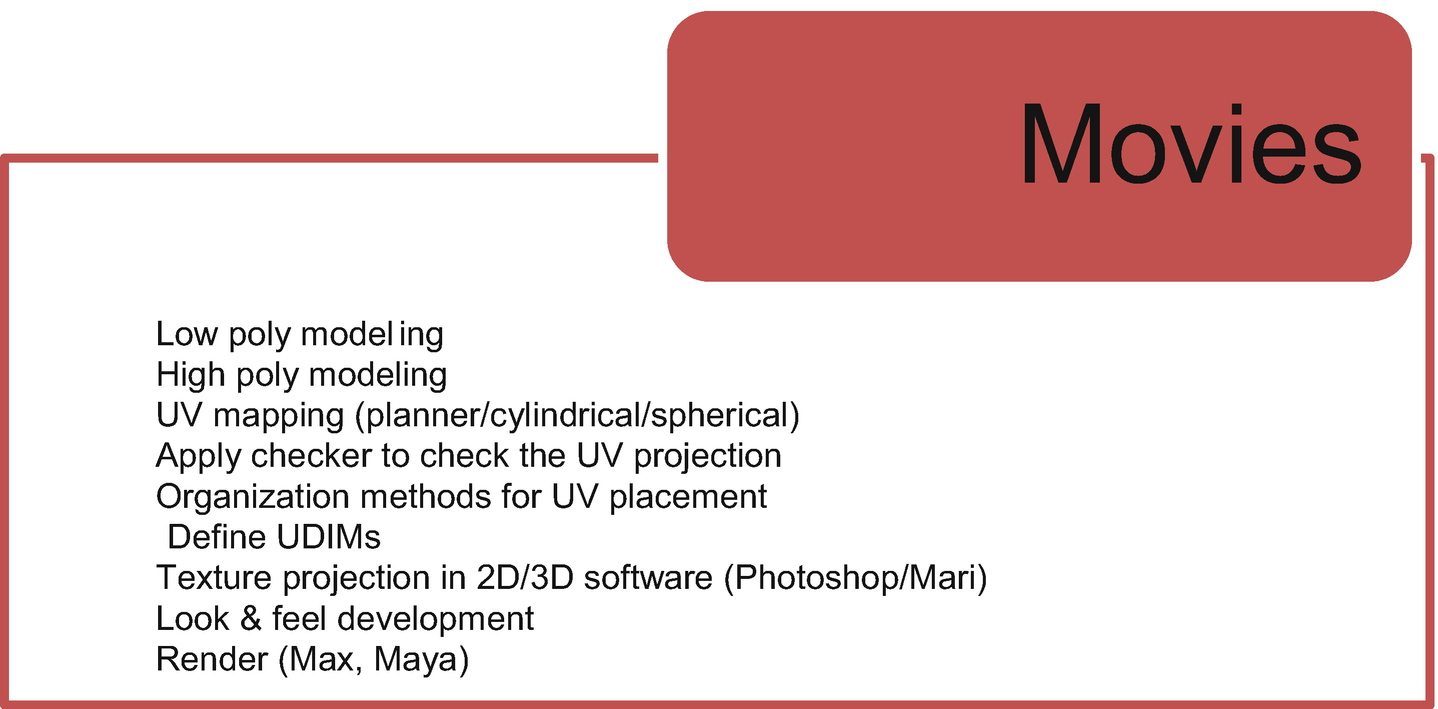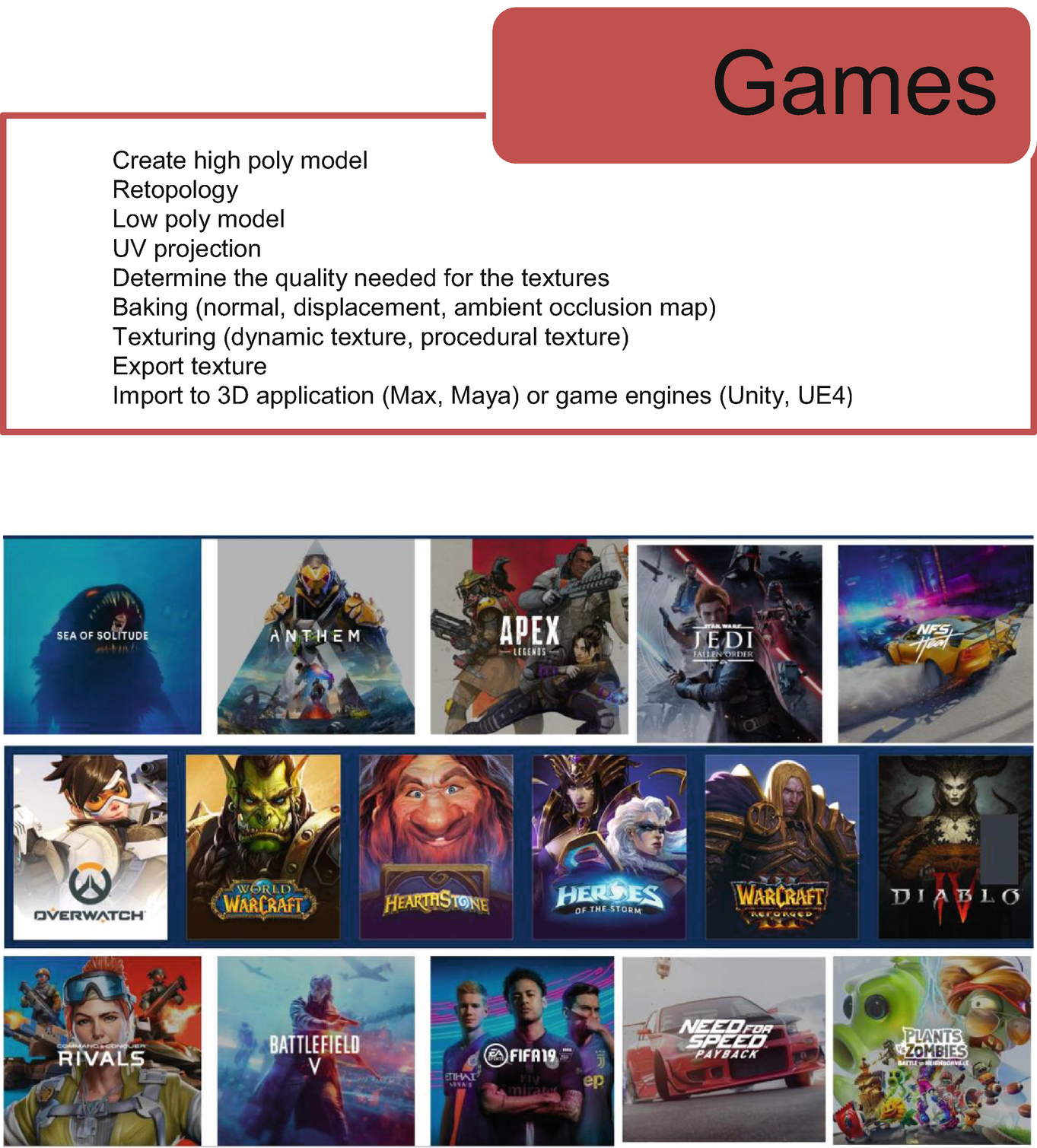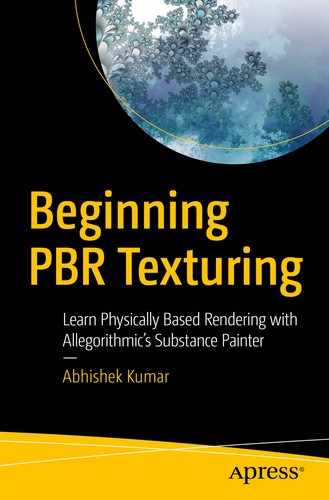In this chapter, you will see the differences between texturing for games versus texturing for movies.

Four attributes simulated by texture mapping
Texture use in a game should be lower resolution than in films. Texture resolution in a game is usually taken from the number of pixels per meter, whereas in films, the texture resolution and details are per the level of details visible in the camera. Therefore, in a close-up shot, an object’s texture in a film may contain hundreds of texture maps. For example, human skin for films ca generate several maps alone for subsurface scattering (SSS) scattering. In games, objects usually have from one to three texture maps. Usually, in games, we use a diffuse map, a specular map, a bump or normal bump, and an alpha map. In a game, we use tillable textures to save memory and also try to create details with many similar objects, so with a single texture, we can optimize the game. However, in films, you would usually avoid using elements repeatedly so you can create variation. In a film, we maximum the use of handmade or photo-based textures to generate more realistic results; for game textures nowadays, artists prefer PBR textures. For games currently, there are still some technical limitations to using high-resolution textures, but in the coming year, they will no longer be a barrier; a game engine’s texture streaming pipeline will automatically load textures based on several parameters, with the most critical factor being the texture loading based on the distance to the camera.
Texture Pipeline for Movies

Texturing workflow for movies
Texture Pipeline for Games

Texturing workflow for games
Common Pipelines and Similarities for Games and Films

Examples of texturing pipeline methods
To put it simply, in movies, we are doing high poly modeling with a high level of detail in texturing to give realistic results. In gaming, we are using a low poly model with a high level of detail in texturing to give better performance results for playing the games.
In next chapter, I will discuss the various traditional and modern texturing methods and their pros and cons. This will help you decide which method is best suited to you.
